London
CAPITAL OF THE WORLD
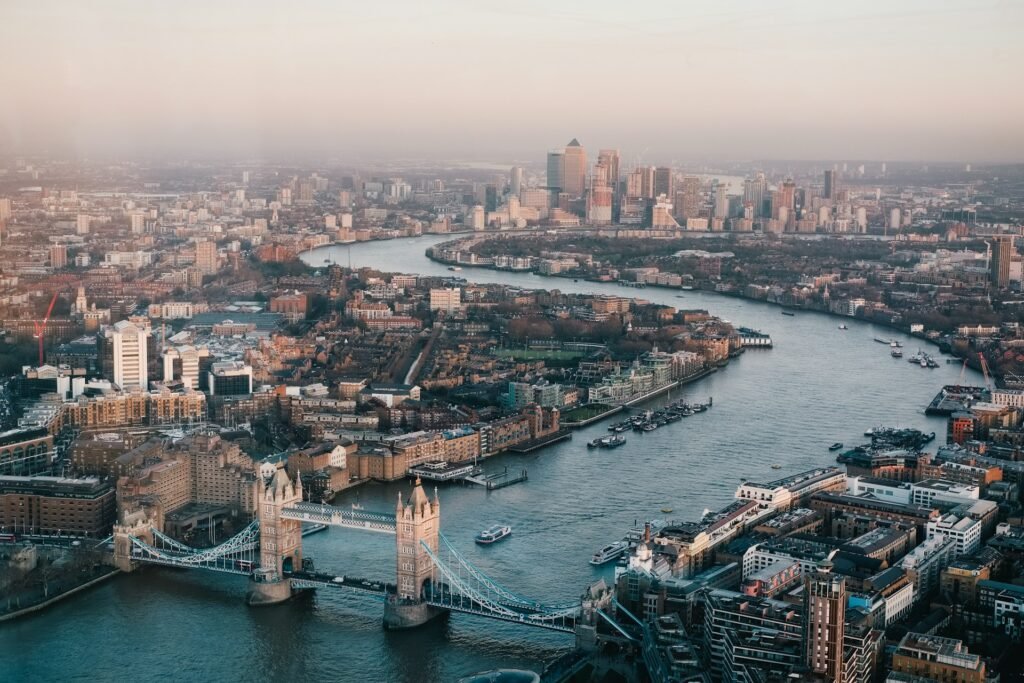
It helps keep this site running, and we appreciate your support!
Sightseeing
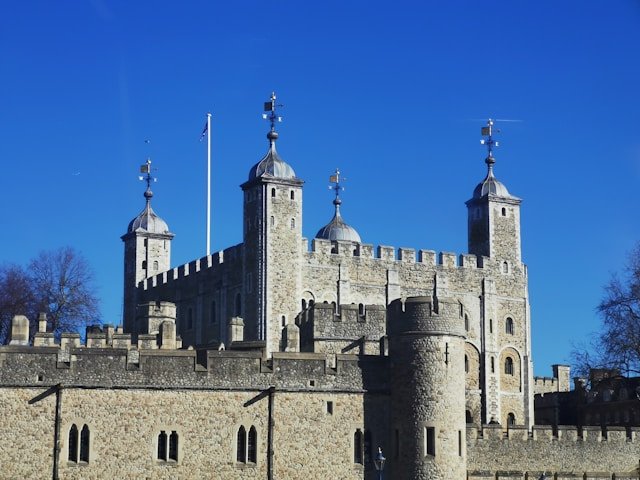
Tower of London
The Tower of London, a formidable 11th-century fortress hugging the banks of the Thames, has long stood as a sentinel of England’s storied past, safeguarding both royal treasures and notorious captives. From the ill-fated Anne Boleyn, who met her end within its walls, to the six legendary ravens that still strut across its grounds—said to protect the kingdom’s fate—this site pulses with history. Originally a palace and prison under William the Conqueror, it’s now home to the breathtaking Crown Jewels, where the Imperial State Crown, encrusted with nearly 3,000 shimmering gems, steals the show alongside orbs and scepters steeped in tradition. This bloody, regal relic offers a haunting yet majestic glimpse into London’s past, where tales of execution and opulence intertwine, making it an essential stop.
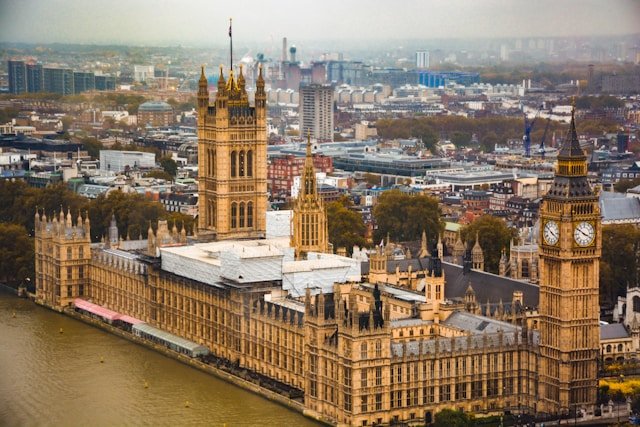
Big Ben & Houses of Parliament
Big Ben, officially renamed Elizabeth Tower in 2012 for Queen Elizabeth II’s jubilee, stands tall over Westminster, its Gothic spires piercing the sky as its renowned bell—cast in 1858—chimes across London. The adjacent Houses of Parliament, a Victorian marvel of carved stone and pointed arches, buzzes with the debates of lawmakers in its historic chambers. Tours, when available, let visitors climb the tower’s 334 steps to see the clock’s intricate mechanics or step inside the Palace of Westminster to witness the House of Commons and Lords in session. A symbol of endurance through war and time, this iconic pair remains London’s timeless heartbeat.
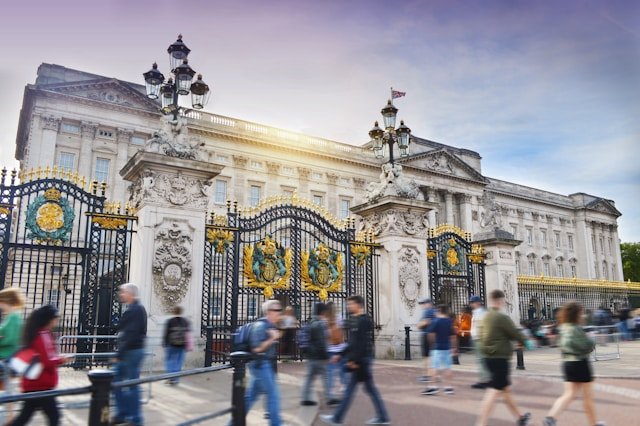
Buckingham Palace
Since 1837, when Queen Victoria settled in, this vast stone palace has been the monarch’s London home. Bought by George III in 1761, it now spans 775 rooms and stages the Changing the Guard daily at 11 a.m.—a spectacle of red tunics and bearskins. Summer tours unveil the State Rooms, with their thrones, chandeliers, and Royal Collection art by Rembrandt and Rubens. Out front, the Victoria Monument, topped with golden Victory, shines amid manicured gardens. Steeped in history and tradition, this royal landmark delivers an up-close taste of regal life.
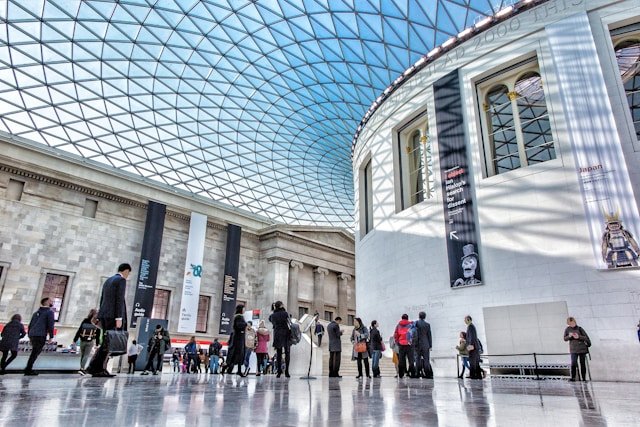
British Museum
Tucked away in Bloomsbury since 1753, this treasure trove became the world’s first public museum, opening its doors in 1759 with Sir Hans Sloane’s eclectic collection of over 71,000 objects. Today, it sprawls across a Greek Revival masterpiece, housing eight million artifacts that span two million years of human history. The Great Court, a glass-roofed marvel, shelters the famous Reading Room where Karl Marx penned Das Kapital. Highlights include the Rosetta Stone, unlocking ancient Egypt’s secrets, and the Parthenon Marbles, sparking debates over their origins. Free to enter, it’s a labyrinth of culture—from mummies to medieval relics—drawing over six million visitors yearly.
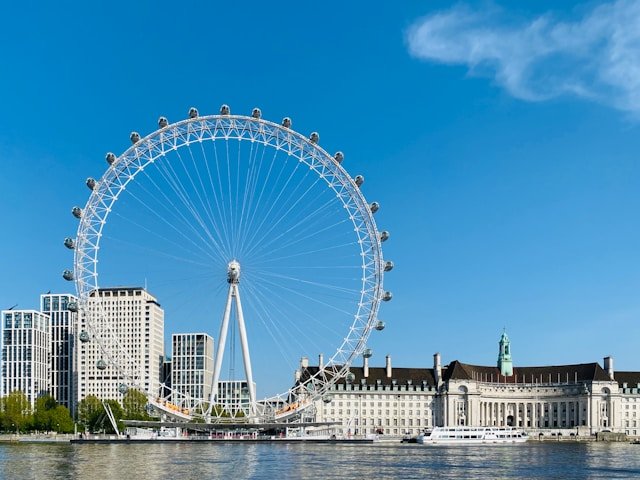
London Eye
Since spinning to life in 2000 as the world’s tallest Ferris wheel, this sleek giant on the Thames’ South Bank has offered jaw-dropping views of London’s skyline. Designed by David Marks and Julia Barfield, its 32 high-tech pods—symbolizing the city’s boroughs—carry up to 25 passengers each for a 30-minute ride. At 443 feet, it frames Big Ben, St. Paul’s, and the Shard in one sweep. Day or night, it’s a modern marvel delivering the capital’s pulse from above.
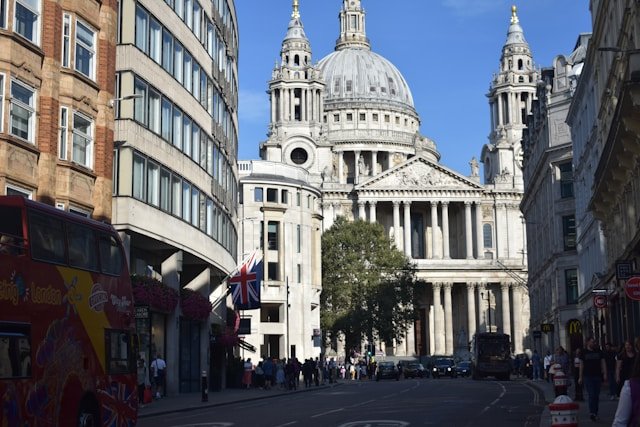
St. Paul’s Cathedral
Perched atop Ludgate Hill since 604 AD, though rebuilt after the Great Fire of 1666, this architectural gem shines as Sir Christopher Wren’s Baroque masterpiece. Its iconic dome—once London’s tallest structure at 365 feet—still dominates the skyline, offering panoramic views from the Golden Gallery after a 528-step climb. Inside, the Whispering Gallery’s acoustics amaze, while the crypt honors heroes like Nelson and Wellington. From royal weddings to wartime resilience, it’s a sacred beacon of history and grace.
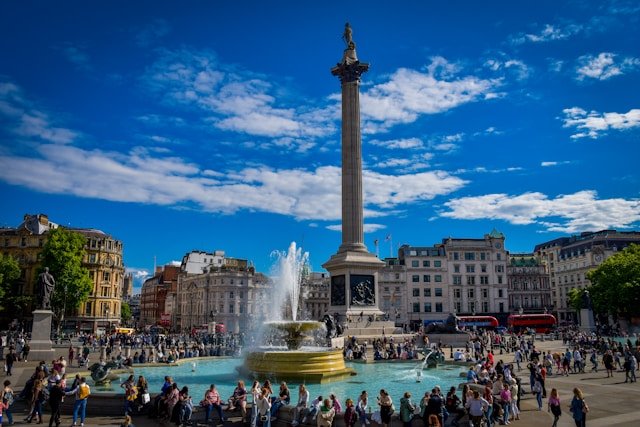
Trafalgar Square
Born in 1840 to honor Admiral Nelson’s 1805 naval victory, this bustling plaza anchors central London with its towering 169-foot Nelson’s Column, guarded by four bronze lions. Once a royal mews, it’s now a stage for protests, celebrations, and art, flanked by the National Gallery’s masterpieces. Fountains splash around Canada House and South Africa House, while street performers vie for attention. A hub of history and energy, it’s London’s beating heart laid bare.
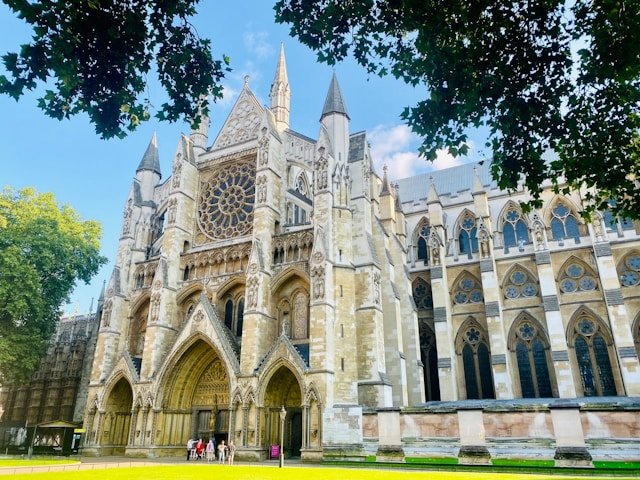
Westminster Abbey
Since its consecration in 1065, this Gothic marvel has been Britain’s coronation church, hosting 39 monarchs’ crownings—starting with William the Conqueror in 1066—and 16 royal weddings, like Prince William and Kate’s in 2011. Tucked beside the Houses of Parliament, its soaring arches and stained glass shelter the tombs of legends like Newton, Darwin, and 17 kings and queens. Poets’ Corner immortalizes Chaucer and Dickens. A living monument of faith and history, it’s a must-see.
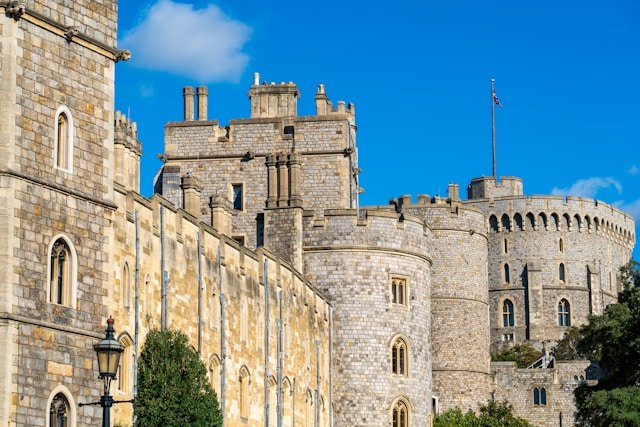
Windsor Castle
Claiming its spot since William the Conqueror picked this Thames Valley ridge in 1070, this stone stronghold morphed from a Norman fort into the world’s oldest continuously occupied castle when Henry I moved in by 1110. Today, it’s a royal weekend retreat—950 years strong—spanning 13 acres with treasures like St. George’s Chapel, where monarchs from Henry VIII to Queen Elizabeth II rest, and the State Apartments, dripping with art by Rubens and Canaletto. The Changing the Guard struts at 11 a.m., and the Long Walk stretches 2.64 miles through deer-dotted parkland. It’s a living slice of regal history.
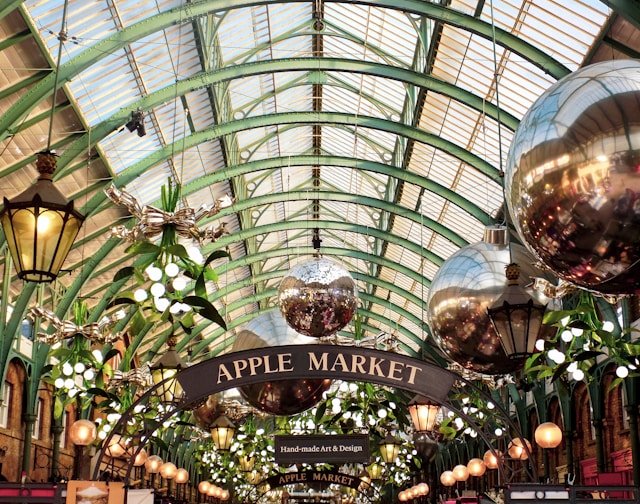
Covent Garden
Sprung from a 13th-century convent garden, this vibrant patch bloomed into a fruit-and-veg market by 1654, only to reinvent itself after the market’s 1974 exit. Now, its glass-roofed Piazza hums with street performers—jugglers, musicians, living statues—while boutique shops and eateries spill from the old market halls. The Royal Opera House looms nearby, and the London Transport Museum adds a quirky twist. It’s a swirl of history, culture, and charm in London’s beating core.
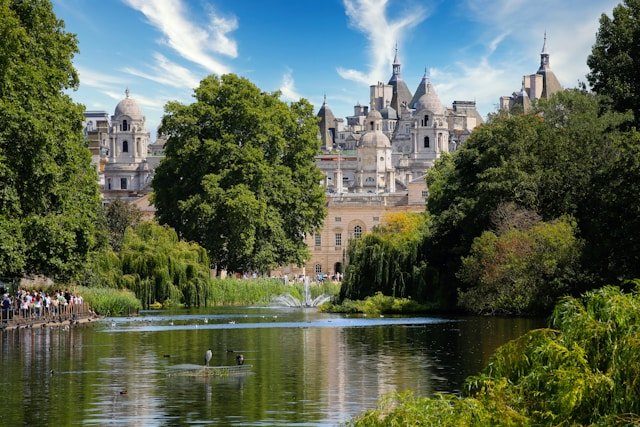
Hyde Park
Stretching across 350 acres since Henry VIII nabbed it in 1536 for hunting, this green sprawl became London’s playground when it opened to the public in 1637. The Serpentine Lake splits it, offering boating and the infamous 1907 swimming spot where Shelley’s wife learned her strokes. Speaker’s Corner buzzes with free speech, while the Diana Memorial Fountain sparkles quietly. From Rotten Row’s horse trails to summer concerts, it’s an urban oasis pulsing with life.
Day Trips
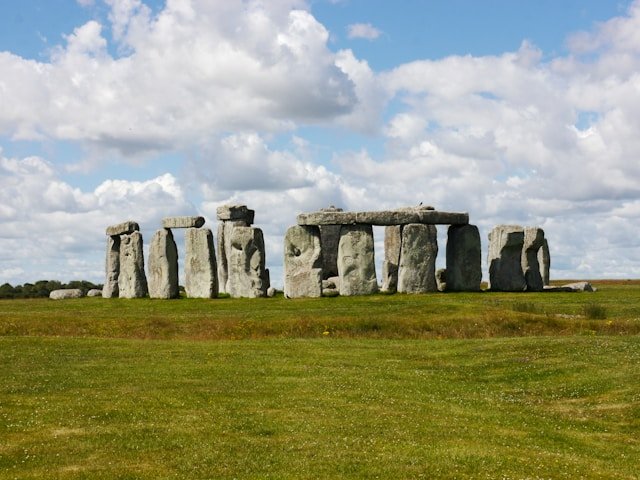
Stonehenge
Rising from Salisbury Plain since around 3000 BC, this prehistoric enigma of towering sarsens and bluestones—hauled from 200 miles away in Wales—baffles and awes. Built in phases over centuries, it’s thought to be a ceremonial site tied to solstices, with its stones aligned to catch the sun’s rise and set. Myths swirl—Druids, Merlin, healing powers—yet its true purpose remains elusive. A shuttle from the visitor center drops you near this ancient riddle, a haunting echo of humanity’s past.
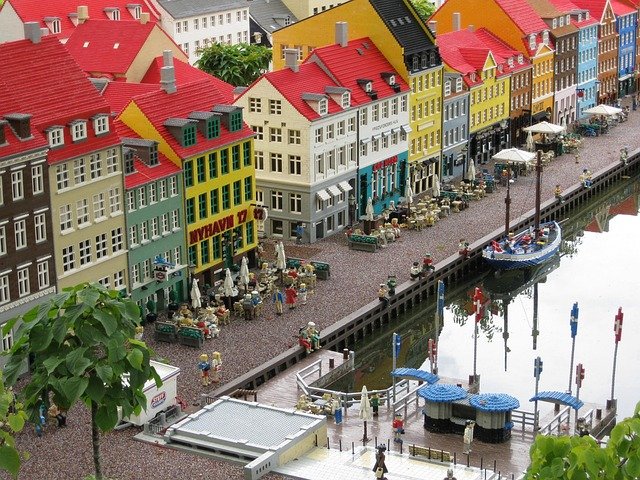
LEGOLAND® Windsor Resort
Sprawling across 150 acres of Berkshire parkland since its 1996 debut, this LEGO-themed haven sprang from the ashes of Windsor Safari Park, blending brick-built whimsy with family thrills. Once the world’s top-attended LEGOLAND at 2.43 million visitors in 2019, it now boasts over 55 rides and attractions—like the duelling Minifigure Speedway rollercoaster and the immersive Flight of the Sky Lion. The iconic Miniland dazzles with 40 million bricks crafting global landmarks, while DUPLO Valley caters to tots with gentle rides and splash zones. Two on-site hotels, the LEGOLAND Resort and Castle, offer themed stays—think pirate lairs or knightly quarters—complete with early park access and a pirate splash pool. It’s a colorful escape where imagination reigns.
Activities

London Zoo
Nestled in Regent’s Park, this 36-acre wildlife haven—the world’s first scientific zoo—teems with over 19,000 animals from 673 species. Endangered Sumatran tigers prowl Tiger Territory, Humboldt penguins splash at Penguin Beach, and Komodo dragons lurk in the Reptile House, famously featured in Harry Potter. The Land of the Lions recreates an Indian village vibe, while the 1927 Mappin Terraces echo its historic roots. Founded in 1828 by the Zoological Society, it opened to the public in 1847, evolving from a scholarly collection into a vibrant showcase of nature’s diversity.
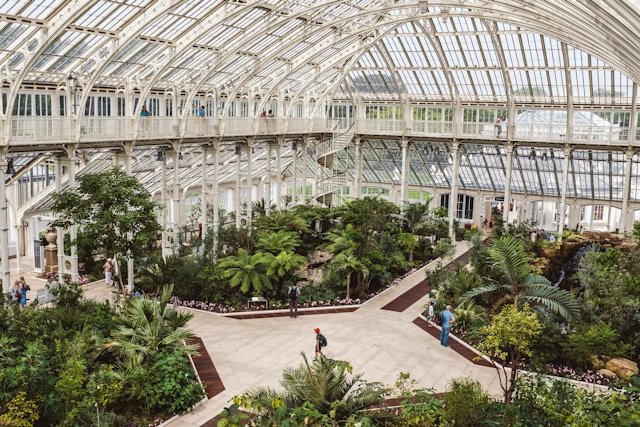
Kew Gardens
Carved out in 1759 from royal estates, this 330-acre botanical wonder in southwest London unfurls as a UNESCO World Heritage site, cradling over 50,000 plant species. The Temperate House, a Victorian glass cathedral, shelters rare flora, while the Palm House steams with tropical giants like the ancient cycad Encephalartos altensteinii, here since 1775. The treetop walkway sways 59 feet up, offering skyline views, and the Great Pagoda, built in 1762, spikes the horizon. Seasonal blooms—like spring’s cherry blossoms—plus the Hive’s buzzing, light-shifting sculpture make it a living tapestry of nature and history.
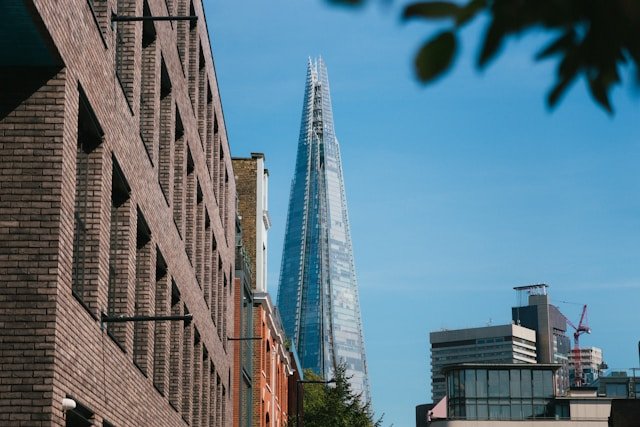
View from the Shard
Soaring above London since its 2013 opening, this sky-high vantage point crowns The Shard—Western Europe’s tallest building at 1,016 feet—offering a jaw-dropping 360-degree panorama from its 68th, 69th, and 72nd floors. High-speed lifts whisk you up from the bustling South Bank near London Bridge to gaze across 40 miles of cityscape on a clear day. Spot icons like Tower Bridge, St. Paul’s Cathedral, and the London Eye, or peer up at the spire’s jagged peak from the open-air Skydeck. With multimedia exhibits tracing London’s story and a Champagne bar for a posh sip, it’s a lofty perch blending thrill and history.
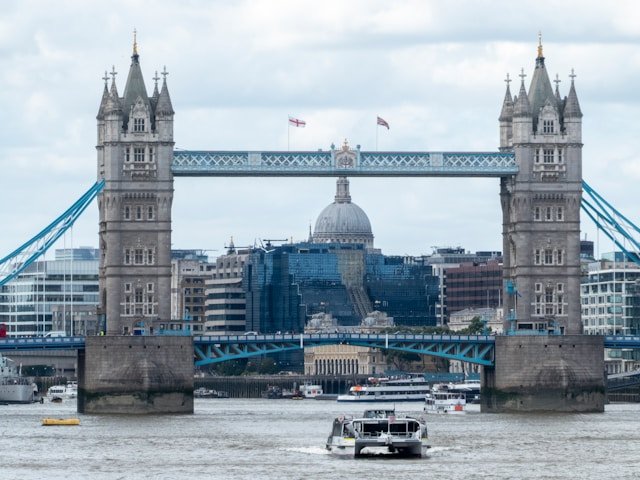
Thames River Cruises
Flowing since Roman times, the Thames has ferried history—Vikings to modern explorers—and now offers cruises from piers like Westminster or Tower Bridge. See the London Eye, Big Ben, and the Tower of London on a 40-minute narrated jaunt from London Eye Pier, or stretch to Greenwich (an hour each way) for the Cutty Sark. Dinner cruises from Embankment dazzle with meals and music in three hours, while hop-on, hop-off passes keep it flexible. Speedboats from Thames Rockets race to Canary Wharf in 50 minutes. It’s London’s watery backbone, tailored to taste.

Madame Tussauds
Kicked off in 1835 when Marie Tussaud brought her wax wizardry from Paris to Baker Street, this iconic attraction settled into its Marylebone Road digs by 1884, blending eerie craft with celebrity glitz. Her guillotine-era death masks—like Louis XVI’s—set the tone, but now it’s a selfie paradise with over 150 lifelike figures: royalty like King Charles III, stars like Beyoncé, and Marvel heroes mid-action. The Chamber of Horrors chills with Jack the Ripper, while the Spirit of London ride zips through history in a black cab. It’s a quirky, star-studded time capsule.

Harry Potter Warner Bros. Studio London
Opened in 2012 near London in Leavesden, this studio tour—Warner Bros. Studio Tour London – The Making of Harry Potter—sprawls across the original film soundstages, offering a self-guided dive into the wizarding saga. Built with custom soundstages J and K, it features over 80 sets like the Great Hall, Diagon Alley, and Platform 9¾ with the Hogwarts Express. Authentic props—Harry’s wand, the Sorting Hat—and costumes like Dumbledore’s robes dazzle, alongside the Backlot’s Knight Bus and Privet Drive. A 40-million-brick Miniland miniaturizes Hogwarts. With 4 hours to roam and seasonal perks like Hogwarts in the Snow, it’s a magical glimpse into movie history.
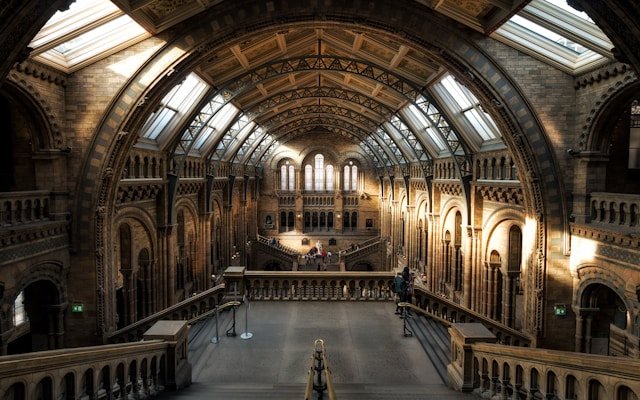
Natural History Museum
Housed in a Romanesque cathedral of science since moving to South Kensington in 1881, this treasure chest of nature sprawls across galleries carved from terracotta and sky-blue tiles. Over 80 million specimens—spanning 4.5 billion years—fill its halls, from the Diplodocus skeleton “Dippy” (now a bronze replica in Hintze Hall) to Darwin’s pigeon bones. The Blue Whale skeleton dives overhead, while Earthquake shakes you with tectonic jolts. Gems dazzle in the Vault, like the cursed Hope Diamond’s cousin, and the Wildlife Garden blooms outside. It’s a free plunge into Earth’s epic story.
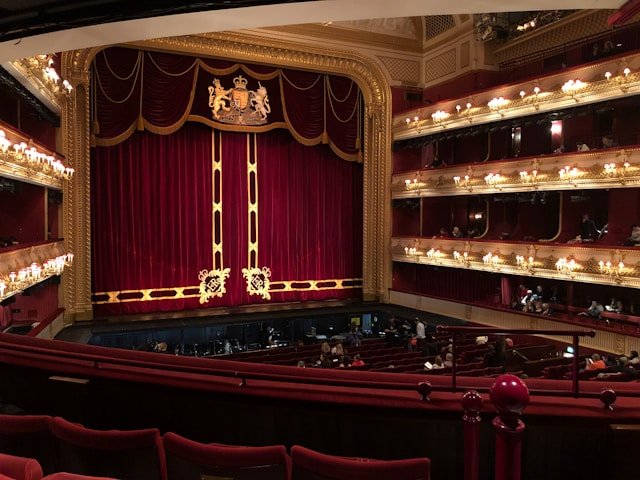
London Theatre Shows
London’s theatre scene thrives in the West End, a magnet for visitors seeking live drama. Les Misérables has stormed the Sondheim Theatre since 1985 with its stirring tale of revolution, while The Devil Wears Prada, a newer musical at the Dominion, dazzles with sharp wit and style. Harry Potter and the Cursed Child at the Palace Theatre weaves magic through inventive staging, a staple since 2016. From timeless classics to fresh productions, the capital’s stages—over 70 strong during Theatre Week—offer a rich mix of storytelling. It’s a cultural feast for any traveler.
Flights
Hit shoulder seasons—March to May or September to October—for flights to London. Fares fall from summer highs, weather’s mild (10-18°C/50-65°F), and spots like the Tower of London quiet down. Avoid July-August, when prices peak and Heathrow swarms—saving cash for fish and chips.
Book 2-3 months ahead for deals from British Airways or easyJet. Midweek flights—Tuesdays or Wednesdays—undercut weekend rates, skipping Friday-Sunday rushes. Set Skyscanner alerts to snag dips, securing more for your London adventure.
Flex dates by a day or two for savings, or try Gatwick (40 km south) or Stansed (55 km northeast) over Heathrow. Budget carriers land there, but add transfers—Gatwick’s train is 30 minutes (£10/$13), Stansted’s bus 50 minutes (£12/$16). Compare with Heathrow’s 15-km tube ride to balance cost and ease.
Hotels
The Hoxton, Shoreditch
Nestled in the heart of Shoreditch, this hotel thrives amid the East End’s creative pulse, surrounded by street art, indie galleries, and vintage shops. Its industrial-chic rooms boast exposed brick walls, rainfall showers, and curated bookshelves, blending urban edge with cozy comfort. The lobby hums as a trendy hangout, doubling as a co-working space where locals tap away alongside travelers. Downstairs, the restaurant serves up inventive takes on comfort food—like truffle fries or slow-cooked brisket—while the staff dish out insider tips on nearby markets or hidden bars. It’s a lively launchpad for diving into London’s eclectic east, where every corner promises a fresh discovery.
The Resident Kensington
Tucked into a serene, tree-lined street in posh Kensington, this hotel sits a short stroll from Hyde Park’s greenery and the Victoria & Albert Museum’s treasures. Its rooms, with mini-kitchens stocked with microwaves and fridges, plus plush beds draped in crisp linens, feel like a stylish home away from home. Guests love the attentive staff, who greet you with warm smiles and spot-on dining recommendations—like a cozy pub nearby. The quiet elegance of the area offers a peaceful retreat after pounding London’s pavements, yet the Tube’s close reach keeps the city’s pulse accessible. It’s a refined base blending convenience and calm.
CitizenM Tower of London
Hovering steps from the Tower of London, this modern marvel pairs a killer location with bold, artsy flair. Rooms dazzle with floor-to-ceiling windows—some framing the Shard’s spire—king-sized beds, and tablets to tweak lighting or blinds. The 24/7 canteen slings grab-and-go meals or cocktails, perfect for late-night arrivals, while the rooftop lounge offers skyline views that rival any postcard. Its quirky decor, from neon signs to funky furniture, keeps the vibe playful yet polished. Guests praise the seamless check-in and proximity to Tower Bridge, making it a dream for history buffs and night owls alike.
The Pilgrm, Paddington
Perched across from Paddington Station, this boutique gem fuses Victorian bones with sleek, modern soul. Its rooms, adorned with original fireplaces, bespoke art, and cloud-like beds, ooze character, while the rooftop terrace offers a rare perch above the city’s hum. The lounge below tempts with artisanal coffee, hearty breakfasts, and cocktails shaken with flair—earning raves for its cozy ambiance. Staff weave in personal touches, like handwritten notes or local tips, and the rail hub outside zips you to Oxford Street or Heathrow in a flash. It’s a stylish haven marrying heritage and hustle, perfect for explorers on the move.
Getting the Most Out of London
Eat Like a Local: Dig Into British Bites
Skip the touristy fish-and-chip traps near Trafalgar Square—seek out proper pubs like The Eagle in Farringdon for hearty pie and mash or a Sunday roast with all the trimmings. Try a full English breakfast at Regency Café in Pimlico, where locals queue for bacon and beans amid retro tiles. Dinner’s earlier here—7 PM is prime—so grab a pint first. Look for spots humming with British accents over selfie chatter.
Book Attractions in Advance: Skip the Lines
London’s big draws—Tower of London (£35/$46) or Westminster Abbey (£29/$38)—pack in crowds, especially summer. Book online a week ahead via official sites to pick your slot and breeze past queues. The London Eye (£32/$42) spins smoother with pre-booked times too. Secure spots early, dodge the wait, and spend more time sipping tea than shuffling in line.
Explore Beyond the Center: Uncover Real London
Venture past Big Ben into areas like Brixton or Camden for London’s true grit. Brixton’s markets sizzle with jerk chicken (£6/$8), minus the tourist markup, while Camden’s punky stalls and canal-side pubs pulse with local life. You’ll swap selfie hordes for laid-back vibes—think residents grabbing a pint, not just postcard peddlers.
Navigating London: Tips for Getting Around
The Underground—12 lines, 270 stations—is your fastest bet. Grab an Oyster card (£7/$9 deposit, reusable) or tap a contactless card; fares cap at £8.50/$11 daily in Zones 1-2. Peak times (6:30-9:30 AM, 4-7 PM) spike costs and crowds—travel off-peak for elbow room. Mind the gap, check maps at stations, and download Citymapper for real-time updates. It’s chaotic but unbeatable.
Red double-deckers (500+ routes) hit spots the Tube misses, like Hyde Park’s edges. Fares are £1.75/$2.30 per ride—tap your Oyster or card, no cash. Sit upstairs for views of Big Ben or St. Paul’s. Routes like 15 or 94 are tourist-friendly; Google Maps tracks arrivals. They’re slower but charming.
Central London’s compact—Westminster to Covent Garden is 20 minutes. Pavements link Trafalgar Square to the Thames in a blink, dodging Tube fares (£2.80/$3.60 minimum). Wear comfy shoes for cobblestones, dodge rush-hour bustle (8-9 AM), and use pedestrian crossings—drivers won’t always stop. It’s free and reveals hidden gems.
Santander Cycles (£1.65/$2.15 per 30 minutes) dot 800 stations—grab one near King’s Cross, pedal to Camden. Helmets aren’t provided, so dodge traffic wisely. Black cabs, pricier (£10-£20/$13-$26 short hops), hail easily near landmarks; Uber’s cheaper but surges. Both beat lugging bags on packed Tubes.
Seasons & Weather in London: What to Expect
Spring wakes London with blooms in Kew Gardens and temps climbing from 8-15°C (46-59°F). Days lengthen—sunset nears 8 PM by May—but rain’s a constant (50-60 mm monthly). Pack a light jacket, waterproof shoes, and an umbrella; showers hit fast. It’s crisp, green, and less crowded than summer.
Peak season brings 16-22°C (61-72°F) and long days—sunset past 9 PM. Hyde Park picnics shine, but rain lingers (40-50 mm monthly), and humidity can stick. Light layers, sunglasses, and a brolly balance sun and sudden drizzles. Crowds swell, so book early for the London Eye or theatre.
Fall paints Regent’s Park golden, with temps dipping from 19-10°C (66-50°F). Rainfall creeps up (60-70 mm monthly), and days shorten—sunset by 4:30 PM in November. Layer a scarf over a coat; wind bites. It’s quieter, with cozy pub vibes trumping summer’s rush.
Winter drops to 2-8°C (36-46°F), with 50-60 mm of rain or rare snow. Darkness rules—sunset at 4 PM—but Christmas lights dazzle Oxford Street. Bundle in a heavy coat, gloves, and boots; indoor gems like the British Museum beckon. It’s raw, festive, and oddly charming.
Value Index
Safety in London: Staying Secure
London’s bustling streets—like Oxford Street or Camden Market—are prime for pickpockets. Keep bags zipped and wallets in front pockets, especially on crowded Tubes or buses. Stick to well-lit areas at night; Soho and Shoreditch hum late but can feel dicey off main drags. Phone snatching’s rare but happens—don’t flash it while distracted.
The Tube and buses are safe, even late—night services run on major lines. Solo travelers, opt for busy carriages after dark. Black cabs are regulated and trustworthy; Uber’s fine but stick to licensed rides. Avoid unlicensed minicabs hawking at stations—they’re dodgy.
Central spots like Westminster or Covent Garden feel secure day or night. Edgier areas—say, parts of Brixton or Hackney—vibe fine by day but need caution after hours. Check local advice on apps like Citymapper; rough patches are rare but exist.
Dial 999 for emergencies—police patrol tourist zones like Trafalgar Square visibly. Most stations have help points, and locals are quick to assist if you’re lost. Scams (fake ticket sellers) pop up near big sights—buy from official vendors only. It’s a big city, but vigilance keeps it smooth.
